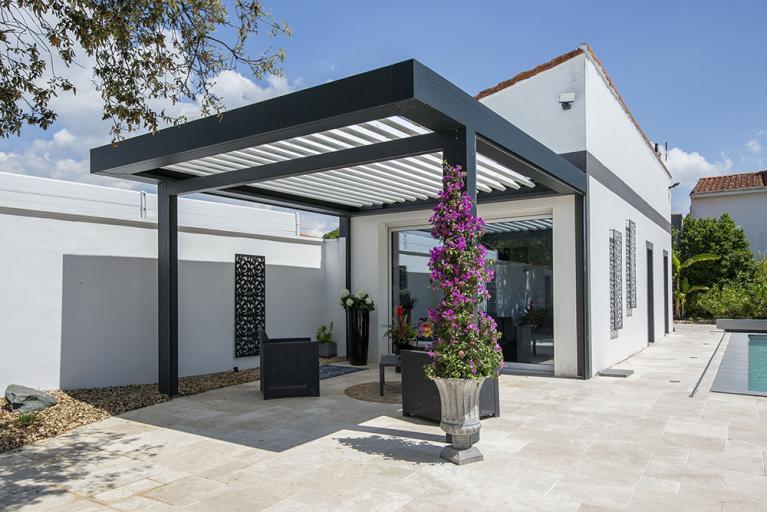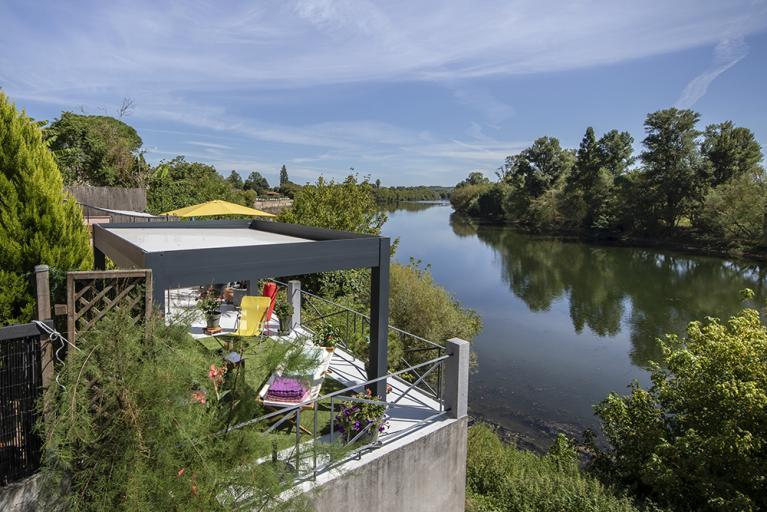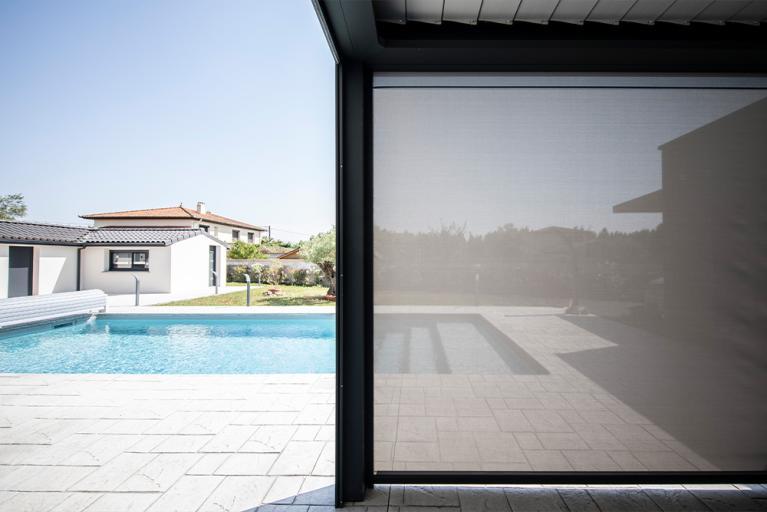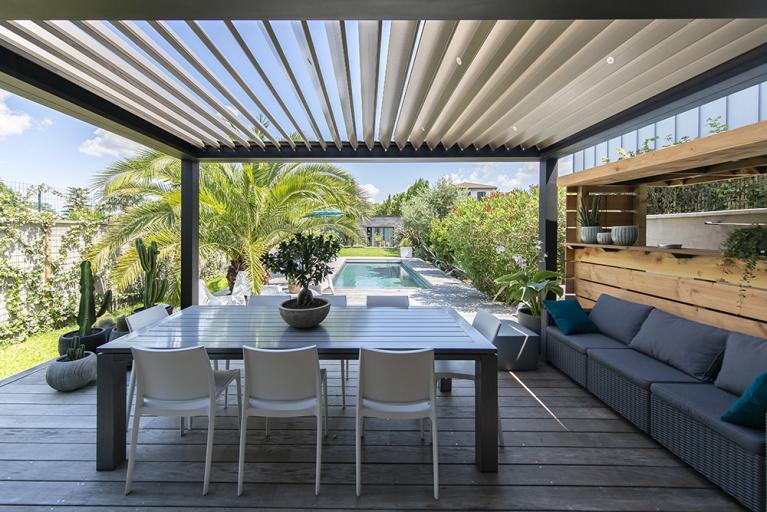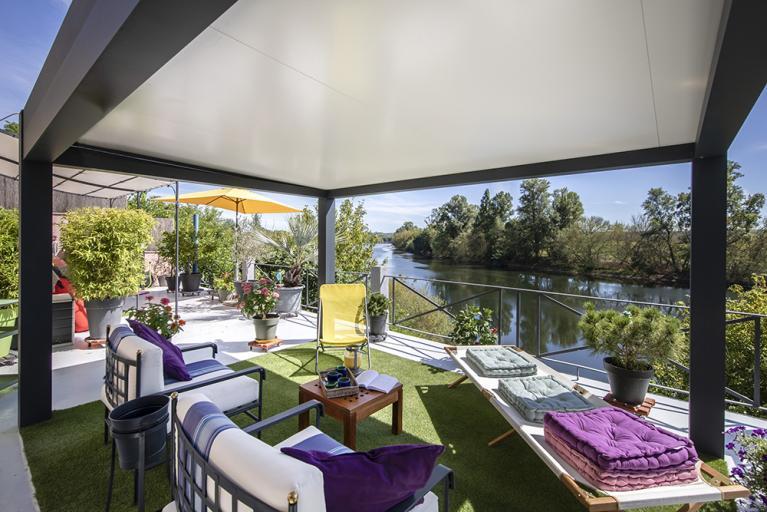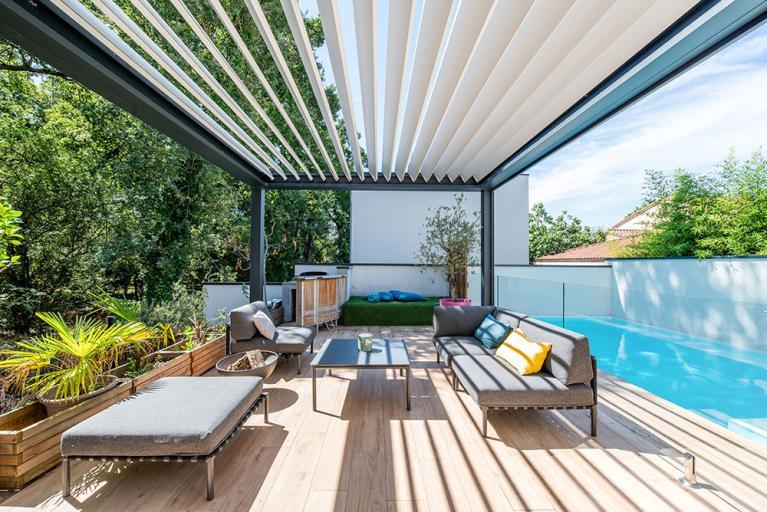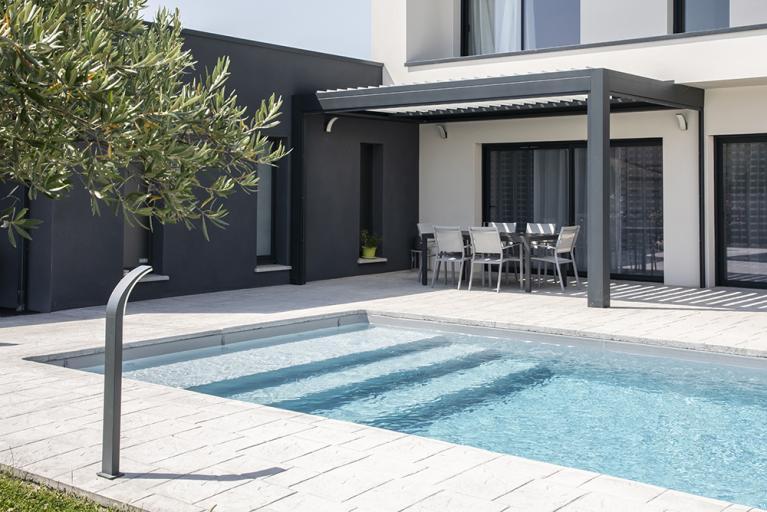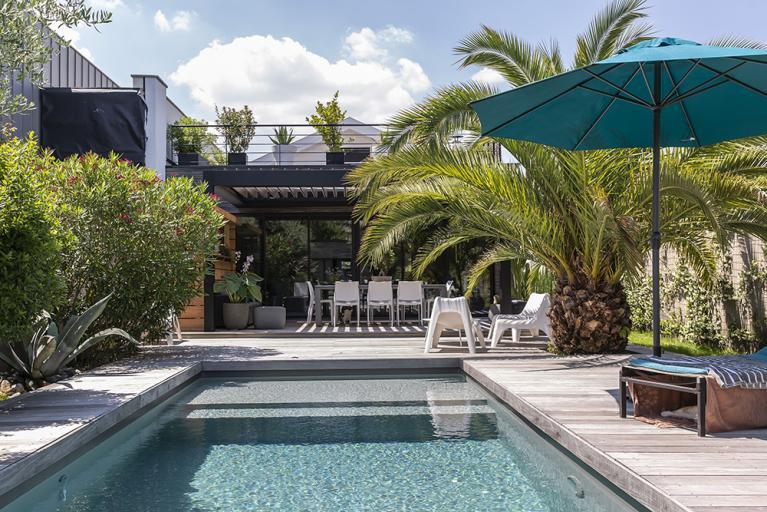How does a pergola work?
A pergola has an incredible number of advantages. You can choose to install a state-of-the-art pergola, such as a bioclimatic pergola. However, a classic pergola will also have remarkable advantages, especially if you decide to add options and equipment that will make this new space a cosy place to live. To make the most of it, there are a few things you need to know and a few common mistakes to avoid.
Orientation of the pergola
In the same way that you choose the orientation of your living rooms and terrace, a pergola built facing south will allow you to benefit from even the smallest ray of sunshine. In summer, when the sun is at its hottest, houses benefit from its warmth whatever their orientation. However, in winter, a south-facing pergola will have the advantage of providing that cosy warmth on sunny days. A south-facing, lean-to pergola will save you money thanks to its roof:
- In winter, your house stays warm, with the roof acting as a shield to prevent energy loss;
- In summer, the roof acts like a parasol, providing welcome shade. In this way, you can avoid having to use a fan or install an air conditioning unit in the adjoining room.
We recommend a south-facing pergola for maximum sunshine all year round. If you don't have this option, you can opt to face east or west to get more light in the morning or evening.
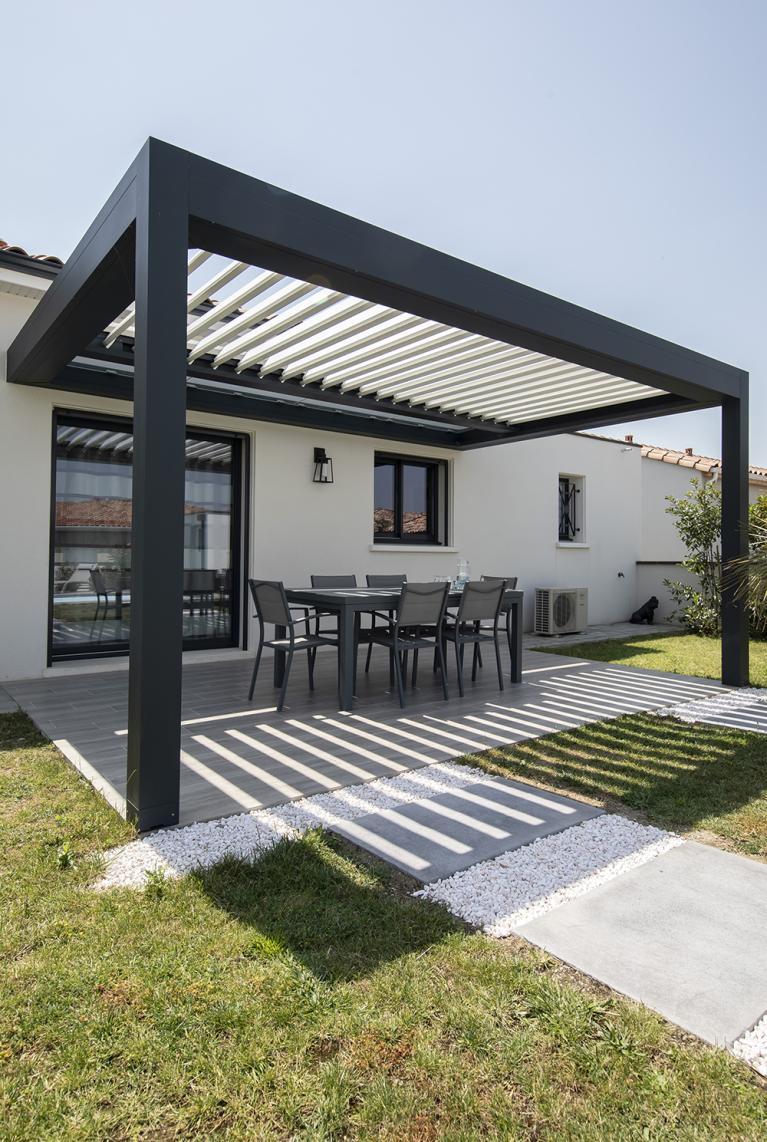
The roof of your pergola: make the right choice
Covering part of your terrace or garden is not a trivial matter when you've always enjoyed a sunny exterior. Depending on your needs, the pergola roof covering will have to meet certain criteria.
- resistance to the elements (rust, etc.) ;
- protection against the elements;
- UV protection ;
- strength (weight of snow, leaves, etc.);
- ease of maintenance;
- Aesthetics.
The canvas cover is a classic, and can be motorised or retractable. You can also opt for a free-standing shade cloth, which you remove when you want. It provides shade and protects against UV rays if you choose a micro-ventilated cover. The translucent alveolar polycarbonate roof is anti-UV treated. It's a durable material that retains light while reducing heat in summer. The double glazing ensures that your pergola retains all natural light. So your home benefits from the light from outside. This roof is available with an Argon solar control option for enhanced solar protection.
The solid aluminium panel is a highly effective insulator. The thickness of the panels stops the sun's rays. You can add an acoustic insulation option to absorb surrounding noise. The sliding roof is an innovation. It is made of transparent polycarbonate. It is anti-UV treated and highly resistant. Its special feature is its opening, which offers a panoramic view or a ‘full’ roof thanks to its sliding arches.
How a bioclimatic pergola works
First of all, what is bioclimatic architecture? A bioclimatic concept is most often a made-to-measure design. By combining the right parameters with the climatic conditions, the builder is able to create a pergola that is part of an ecosystem, creating a warm and welcoming atmosphere outdoors. It adapts to its environment and to the position of the house, so you can make the most of it. A pergola is a four-legged structure topped by a roof.
To adapt to the weather and climate, a bioclimatic pergola has a roof covered with adjustable slats. Thanks to a mechanism, owners can open these slats to receive natural light and a gentle breeze in mild weather. When the sun is too strong or the weather is too harsh, the slats close at the touch of a button. Peripheral gutters collect and drain off rainwater, guaranteeing perfect watertightness.
Some models adapt autonomously to the weather, automatically adjusting the orientation of the slats. The architecture of a bioclimatic pergola will enhance your home. These motorised pergolas have a contemporary design and are made from powder-coated aluminium.
They can be customised in a multitude of ways. You can choose the configuration, the size, whether or not to install a skylight or LED lighting. You can even add a bay window to your bioclimatic pergola! When it comes to installation, there are two types of bioclimatic pergola:
- the lean-to pergola, which has two legs and is fixed to the structure of the house;
- the self-supporting (or freestanding)pergola, which has four legs.
At the height of summer, you can adjust the position of the roof to provide maximum shade and coolness. In winter, thanks to a host of optional features, you can enjoy your outdoor space whatever the weather (you can even install a heater!).
To get the most out of your pergola, we recommend that you opt for perpendicular slats if your pergola faces east or west. Parallel slats are perfect if your pergola faces south or north. Interested in a project? Ask for a free study.
The self-supporting pergola
The freestanding pergola (also known as an island) allows you to choose a special spot for your garden, without the need for it to be attached to the house. It's a real green living room. As for the lean-to version, it becomes a new living space, enhancing the comfort of your property.
The major advantages of a bioclimatic pergola
The bioclimatic pergola is often seen as a simplified version of the conservatory. It adapts to all weathers. It offers many advantages in terms of comfort and is less expensive than a conservatory. You can enjoy your pergola in summer and winter alike, thanks to the roof that shelters you from the elements. However, in winter, in some climates, this space without a front is more of a shelter than a living space. Let's take a look at the advantages of a bioclimatic pergola:
- it lets you enjoy the outdoors while being sheltered from the elements;
- it provides protection from the sun's rays while keeping the light in;
- It comes in a wide range of options, colours and finishes;
- leaning against the wall, it optimises the warmth of the house thanks to its adjustable slats;
- the option of adding glazing or a skylight... ;
- it can be elegantly decorated and fitted out;
- it lasts the test of time;
- More affordable than a conservatory;
- it's quick and easy to maintain. Nothing more than a sponge and soapy water;
- quick installation;
- your home gains in comfort and added value.
Now you know how a bioclimatic pergola works and what its many advantages are. If you have any questions, you can ask your manufacturer for advice. A professional will be happy to guide you!
Find all the articles in the magazine
You have a project?
Would you like a personalised 3D study and a free quotation? Contact us by clicking below.
AKENA is...
Over 40 years of experience
Founded in 1981 by one man, we now have more than 500 employees dedicated to making your project a success.
Made in France
A historic site and two factories covering more than 25,000 m² in Dompierre-sur-Yon in the Vendée region (85)
Innovative and tailor-made products
At AKENA, we are brimming with new ideas to improve and enhance our products.
The European leader in conservatories, pergolas...
But not only! AKENA also offers a complete range of carports and pool houses.
